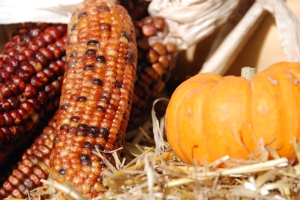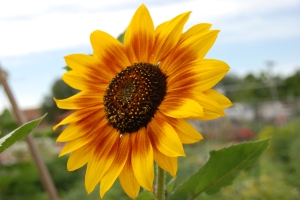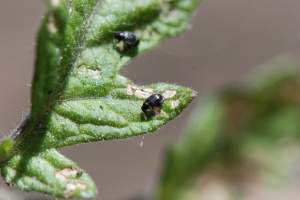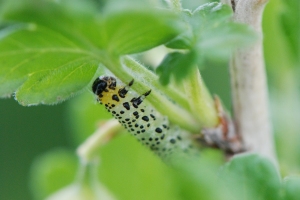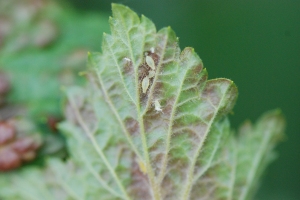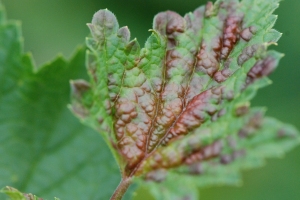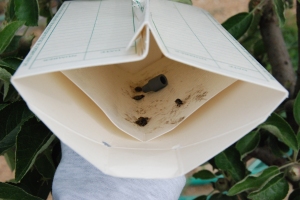The New York Botanical Gardens is hosting a summer long celebration of the edible garden, filling weekends with cooking demonstrations and tips on growing your own food. It’s a beautiful display and nice to see celebrity chefs like Mario Batali, Dan Barber, and Sara Moulton making suggestion on plants to zip up your culinary skills.
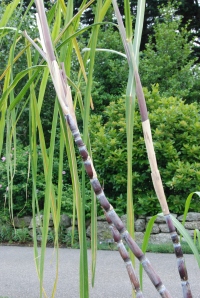 In the raised beds there’s arugula and fava beans, sorrel and corn. There’s even a banana tree and sugar cane, which I didn’t know could be added to a backyard garden. But there it was, looking like the houseplant Dracaena. New Yorkers must treasure their sweets like fine wine if they’re prepared to grow, harvest, and cook down the canes for their sugar. I simply head to the store, but they get a chance to set fire to their crop before taking in the sweet stalks (blogger’s confession: no mention of the flame harvest was made in the information plaque at NYBG; this technique was described to me by a fellow traveler who lived by sugar cane fields in Texas).
In the raised beds there’s arugula and fava beans, sorrel and corn. There’s even a banana tree and sugar cane, which I didn’t know could be added to a backyard garden. But there it was, looking like the houseplant Dracaena. New Yorkers must treasure their sweets like fine wine if they’re prepared to grow, harvest, and cook down the canes for their sugar. I simply head to the store, but they get a chance to set fire to their crop before taking in the sweet stalks (blogger’s confession: no mention of the flame harvest was made in the information plaque at NYBG; this technique was described to me by a fellow traveler who lived by sugar cane fields in Texas).
The container display took patio crops to new heights, with beans, bitter melons and squash vining up wrought iron trellises that suited the Victorian conservatory setting. The formal flair would please even the most discerning HOA guardians in the Denver area. Of note was their technique for supporting the tall sunflowers that added color and whimsy to the gathered pots: bamboo stakes held the flower stalks upright, providing an anchor in a limited rooting space. 
Seed Savers Exchange had an amazing display of heirloom plants in a garden designed by Rosalind Creasy, author of Edible Landscaping. Her use of flowering ornamentals, decorative trellises and kitchen plants was an education in how vegetables offer beauty and usefulness in borders and beds.
Path after path in this edible event was loaded with clues for cooks, from suggestions on daylily blossoms in hot and sour soups to Martha Stewart’s herb garden with its traditional herb hedge and topiary bay trees. That she included roses with big, orange hips was a good thing.
In this world class place filled with millions of plants, one thought kept running through my head: what difference water makes.
The east must be rich with it – they leave hydrants running, faucets on, and bring glasses of it to you in restaurants without being asked. Why, they have so much water it literally falls from the sky.
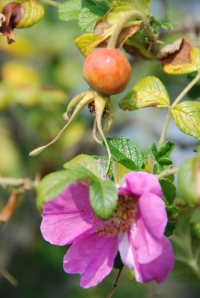 So it should have been no surprise that the method they used to water their vegetable garden was an oscillating fan sprinkler. Back and forth this fountain of water waved, and I was stunned to see it. I’ve spent more than a decade begging people to use drip irrigation, warning them that Overhead Sprinklers Are Not Safe Gardening and You Could Get A Disease.
So it should have been no surprise that the method they used to water their vegetable garden was an oscillating fan sprinkler. Back and forth this fountain of water waved, and I was stunned to see it. I’ve spent more than a decade begging people to use drip irrigation, warning them that Overhead Sprinklers Are Not Safe Gardening and You Could Get A Disease.
But here’s this botanical garden – one of the foremost in the world – using a fan sprinkler to demonstrate how to grow a backyard garden. Don’t try this at home, folks, it still isn’t right for us in the arid west, but I suppose getting people into the garden is the first step, then we can worry about pesky things like fungal spores getting splashed around. And besides, they have so much humidity I doubt they lost water to evaporation.
Miraculously, the plants had no problems. I know because I checked. Perhaps the humidity provides a glossy, protective coat on the leaves and disease can’t get through. Or possibly the plants are growing so quickly that fungus doesn’t stand a chance. Whatever their secret is, this garden is gorgeous, so if you’re in the Bronx, check it out.

